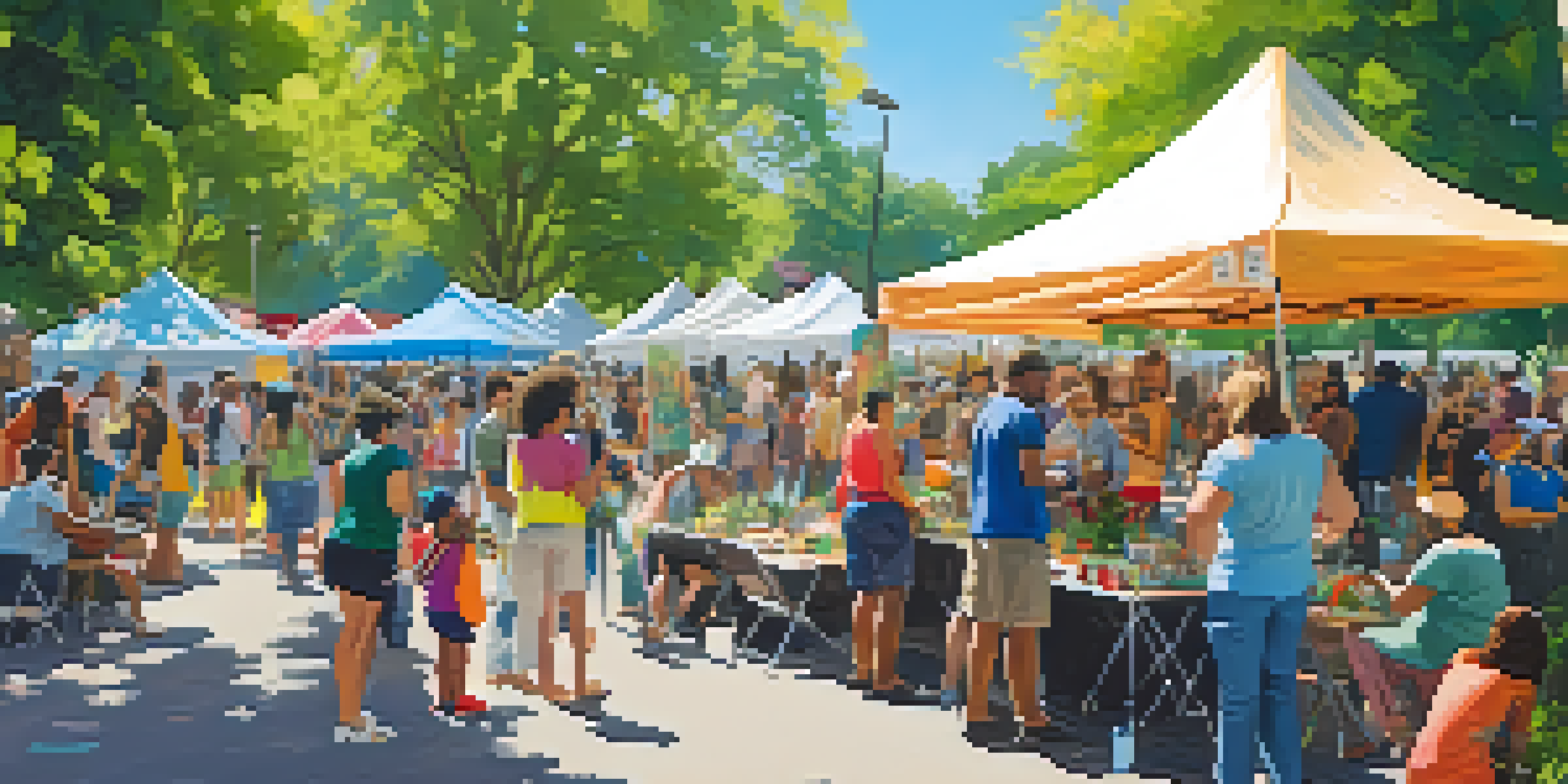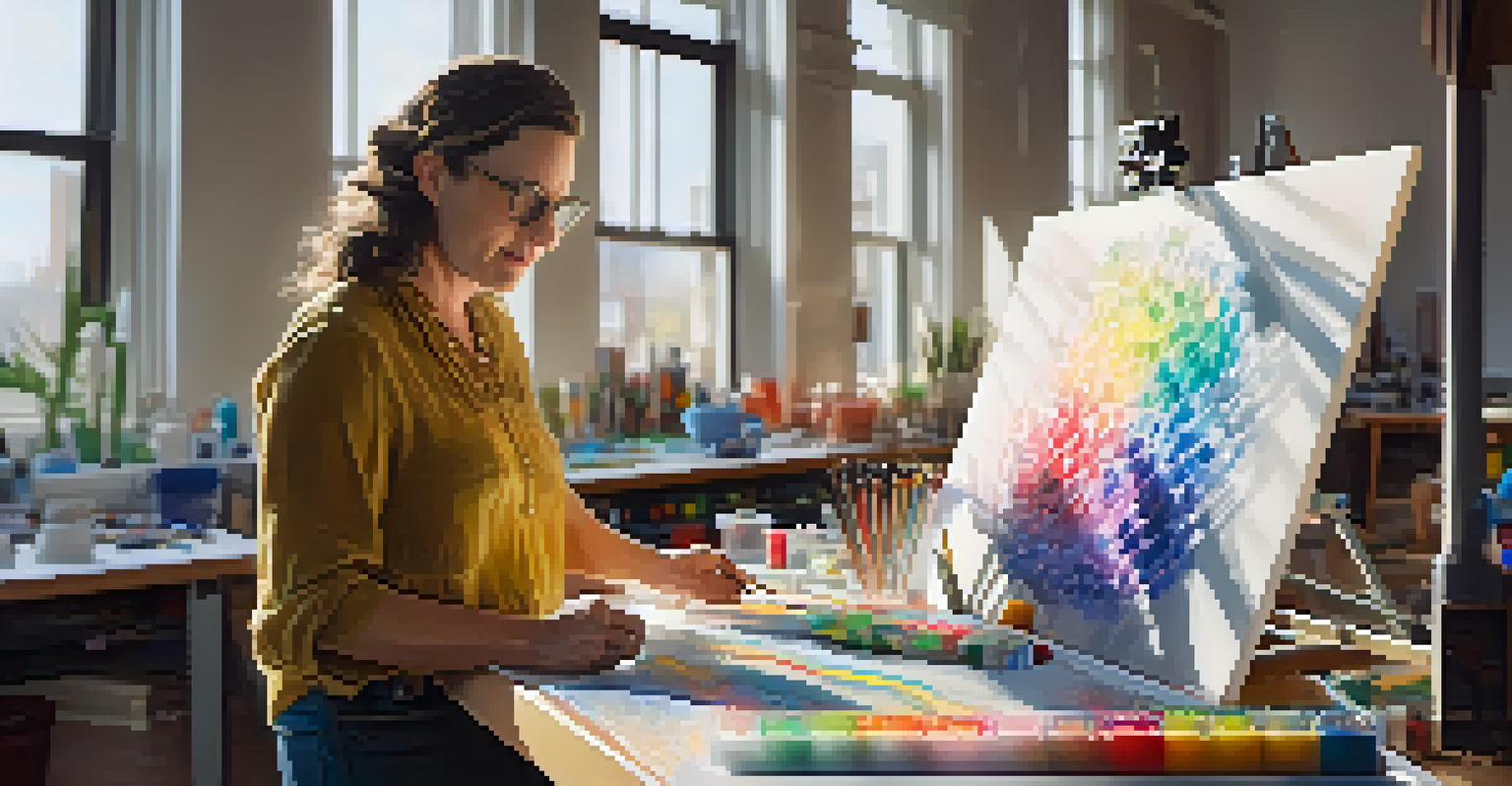The Future of Accessible Art: Innovations and Trends

The Importance of Accessible Art in Society Today
Accessible art plays a crucial role in fostering inclusivity within our communities. It ensures that everyone, regardless of ability, can engage with and appreciate artistic expressions. When art is accessible, it not only enriches the cultural landscape but also promotes understanding and empathy among diverse groups.
Art is not what you see, but what you make others see.
Moreover, accessible art encourages participation from individuals who might otherwise be excluded from the artistic conversation. This participation can lead to new perspectives and ideas, ultimately enhancing the richness of the art world. By prioritizing accessibility, society reaffirms its commitment to diverse voices and experiences.
As we look toward the future, the significance of accessible art becomes even clearer. With an ever-growing emphasis on inclusivity, artists and institutions are challenged to find innovative ways to break down barriers and invite everyone to the creative table.
Technological Innovations Enhancing Art Accessibility
Technology is revolutionizing the way we experience art, making it more accessible than ever. From virtual reality (VR) experiences that allow users to explore galleries from home to apps that provide real-time translations of exhibition descriptions, tech is bridging gaps. These innovations help to create immersive experiences that cater to various needs.

For instance, tactile graphics and 3D printed sculptures offer visually impaired individuals the chance to engage with art through touch. Similarly, audio descriptions can enhance the experience for those who may struggle with visual elements. By incorporating such technologies, artists and institutions demonstrate a commitment to inclusivity.
Inclusivity Through Accessible Art
Accessible art fosters inclusivity, allowing everyone to engage with and appreciate creative expressions.
As technology continues to evolve, we can expect even more groundbreaking tools to emerge. The future of accessible art will likely include advancements like AI-driven personalization, allowing each viewer to tailor their experience according to their unique preferences and needs.
Trends in Community-Based Art Programs
Community-based art programs are gaining traction as a vital component of accessible art initiatives. These programs often involve collaboration between local artists and community members, fostering a sense of ownership and pride. By engaging individuals in the creative process, these initiatives can lead to powerful community connections.
The arts are not a luxury. They are a necessity for the human spirit.
One trend is the rise of pop-up art events that specifically cater to underrepresented groups. These events provide a platform for emerging artists while also creating opportunities for community members to interact with art in a welcoming environment. Such inclusivity can have a lasting impact on the local arts scene.
As more communities recognize the value of accessible art programs, we can expect to see an increase in funding and resources dedicated to these initiatives. The focus on collaboration and community engagement will continue to shape the future of accessible art.
The Role of Art Institutions in Promoting Accessibility
Art institutions play a vital role in promoting accessibility through their programming and outreach efforts. By implementing policies that prioritize inclusive practices, these organizations can set an example for others in the art world. This leadership can inspire a cultural shift toward more accessible art experiences.
Many institutions are now offering training for staff on how to create welcoming environments for all visitors. This includes understanding the needs of individuals with disabilities and implementing changes to physical spaces, such as wheelchair ramps and sensory-friendly areas. These small adjustments can make a significant difference in the overall experience for diverse audiences.
Tech Innovations Enhance Accessibility
Technological advancements are making art experiences more accessible, catering to various needs through immersive tools.
Furthermore, partnerships with disability advocacy groups can help institutions gain valuable insights and resources. By working together, art institutions can develop programs and exhibitions that are not only accessible but also resonate with a broader audience.
Art Education and Accessibility: Breaking Down Barriers
Art education is a powerful tool for promoting accessibility and inclusion. By incorporating diverse perspectives and learning styles, educational programs can help break down barriers that have historically excluded certain groups. This inclusivity enriches the learning experience for all students, fostering a deeper appreciation for the arts.
Many art schools and institutions are now developing curricula that focus on accessibility, teaching future artists how to create work that caters to a variety of audiences. This shift in education not only empowers new generations of artists but also ensures that the conversation around accessibility continues to evolve.
As art education becomes more inclusive, we can expect to see a ripple effect across the art world. Artists will increasingly prioritize accessibility in their work, leading to a more diverse and vibrant artistic landscape.
The Impact of Social Media on Accessible Art
Social media has transformed the way we engage with art, making it more accessible to a global audience. Platforms like Instagram and TikTok allow artists to share their work and connect with followers in real time, breaking down geographical barriers. This democratization of art means that diverse voices can reach wider audiences without the constraints of traditional galleries.
Moreover, social media serves as a platform for advocacy, raising awareness about the importance of accessibility in the art world. Artists and organizations can share stories, resources, and experiences that highlight the need for inclusive practices. This collective effort can lead to meaningful changes in how art is created and presented.
Community-Based Art Programs Thrive
Community art initiatives encourage collaboration and ownership, creating welcoming environments for underrepresented groups.
As social media continues to evolve, its influence on accessible art will likely grow. Expect to see innovative campaigns and collaborations that further promote inclusivity and accessibility in the art community.
The Future: What Lies Ahead for Accessible Art
Looking ahead, the future of accessible art is filled with promise and potential. As awareness about the importance of inclusivity grows, we can expect to see continued innovations in technology and community engagement. Artists and institutions are increasingly recognizing their role in creating accessible experiences for all.
Moreover, the integration of accessibility into the artistic process itself is likely to become more common. Artists will embrace diverse perspectives, ensuring that their work resonates with a broader audience. This shift will ultimately lead to a richer, more diverse art landscape.

While challenges remain, the ongoing dialogue around accessible art encourages optimism. With collaboration and commitment from artists, institutions, and communities, the future of accessible art looks bright and inviting for everyone.